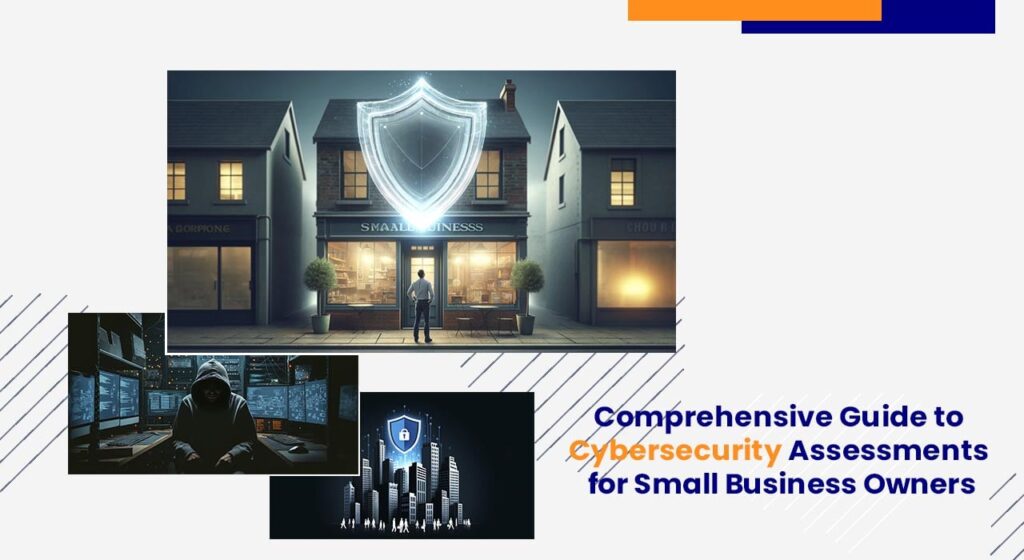
The digital landscape has fundamentally transformed how small businesses operate. While this shift has opened doors to new markets and efficiencies, it has also introduced a critical vulnerability: cybercrime. In 2023, a report by Accenture revealed that 43% of cyberattacks targeted small businesses, a concerning statistic that underscores the growing need for robust cybersecurity measures.
These attacks can have devastating consequences. A single data breach can expose sensitive customer information, leading to financial losses, regulatory fines, and irreparable reputational damage. For instance, in 2021, a small healthcare provider experienced a ransomware attack that compromised patient records and forced them to temporarily halt operations, incurring significant financial losses.
Cybersecurity assessments empower small businesses to take a proactive stance against these threats. By systematically evaluating their digital infrastructure and identifying potential weaknesses, businesses can mitigate risks before they escalate into costly breaches. This proactive approach is essential for safeguarding valuable data, ensuring business continuity, and fostering trust with customers in the digital age.
Why Conduct a Cybersecurity Assessment?
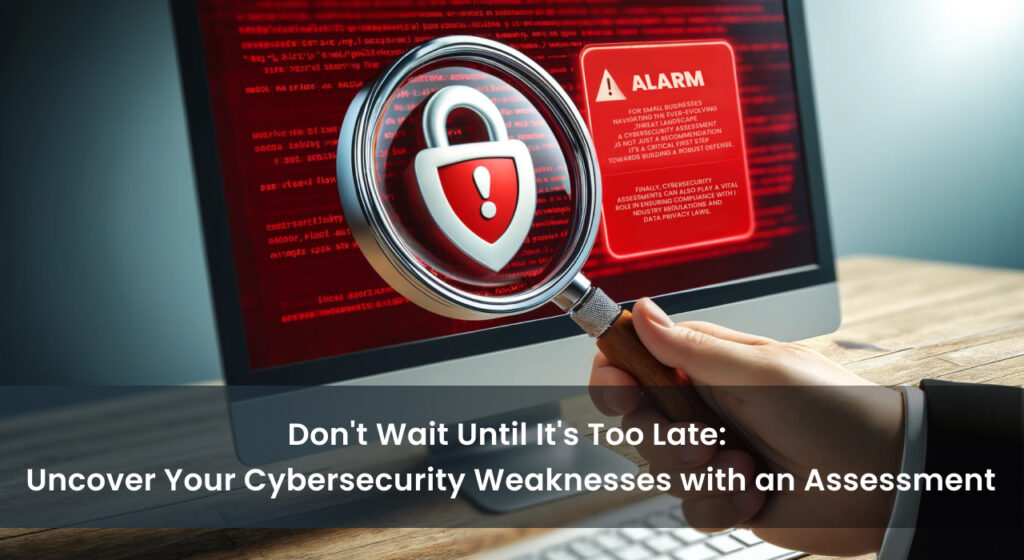
For small businesses navigating the ever-evolving threat landscape, a cybersecurity assessment is not just a recommendation, it’s a critical first step towards building a robust defense. These comprehensive evaluations offer a multitude of benefits that can significantly enhance your cybersecurity posture.
One of the most significant advantages is gaining a clear understanding of your current cybersecurity vulnerabilities. Just like a physical security assessment identifies weak points in a building’s structure, a cybersecurity assessment exposes gaps in your digital defenses. This newfound awareness empowers you to prioritize and address critical security weaknesses before they are exploited by malicious actors.
Furthermore, a cybersecurity assessment helps you identify your most valuable assets – the data, systems, and applications that are essential for your business operations. By pinpointing these critical assets, you can then focus your security efforts on safeguarding them from potential threats. This targeted approach ensures that your most sensitive information receives the highest level of protection.
Perhaps the most compelling reason to conduct a cybersecurity assessment lies in its proactive nature. By proactively identifying and mitigating vulnerabilities, you can prevent cyberattacks before they occur, saving your business from the financial devastation and reputational damage associated with data breaches. The cost of a cybersecurity assessment pales in comparison to the potential losses incurred from a successful cyberattack.
Finally, cybersecurity assessments can also play a vital role in ensuring compliance with industry regulations and data privacy laws. Many regulations, such as HIPAA in the healthcare sector or GDPR in the European Union, mandate specific data security measures. A cybersecurity assessment can help you identify areas where your current practices fall short of these regulatory requirements, allowing you to take corrective action and avoid potential fines or legal repercussions.
There are several different types of cybersecurity assessments available to small businesses, each offering varying levels of depth and complexity. Self-assessments, often conducted internally using free online frameworks, provide a basic starting point for identifying vulnerabilities. Internal audits, performed by qualified IT security professionals within your organization, offer a more in-depth analysis of your security controls. For the most comprehensive evaluation, penetration testing, which involves simulating cyberattacks by ethical hackers, can uncover even the most sophisticated vulnerabilities. Choosing the right type of assessment depends on your specific needs and resources.
Types of Cybersecurity Assessments for Small Businesses
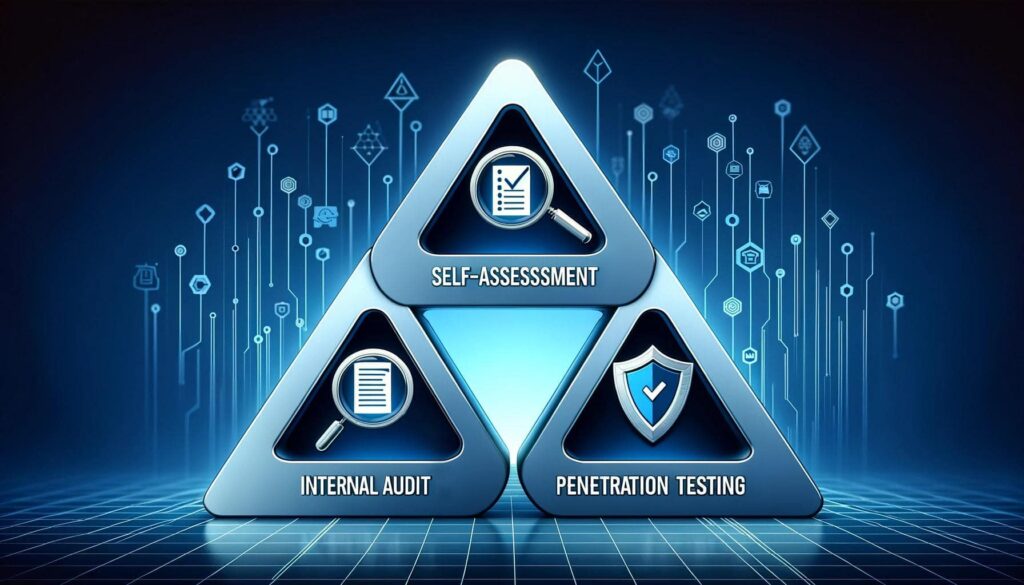
Choosing the right type of cybersecurity assessment depends on your specific needs and resources. Here’s a breakdown of three common options for small businesses:
Self-Assessment
A self-assessment is an internal evaluation conducted by business owners or designated personnel to identify cybersecurity vulnerabilities. These assessments are typically free or low-cost, making them a cost-effective starting point for small businesses with limited budgets.
Several readily available frameworks can guide you through the self-assessment process. The National Institute of Standards and Technology (NIST) Small Business Cybersecurity Framework and the Cybersecurity & Infrastructure Security Agency (CISA) Cybersecurity Framework are popular options, offering a structured approach to identifying critical assets, evaluating existing security controls (firewalls, passwords, access controls) and rating the potential impact of identified risks.
However, self-assessments have limitations. The lack of technical expertise among business owners can lead to overlooking security gaps. Additionally, there’s a potential for bias, as individuals may be hesitant to identify weaknesses in their own processes.
Internal Audit
An internal audit is a more in-depth examination of your cybersecurity posture conducted by qualified IT security professionals within your organization. These professionals have a deeper understanding of security protocols and can uncover vulnerabilities that might be missed during a self-assessment.
Internal audits provide a more comprehensive picture of your security controls by examining not just their presence, but also their effectiveness. This can reveal weaknesses in areas like access management procedures or security awareness training for employees. The benefits of an internal audit include a stronger understanding of internal controls, identification of weaknesses that require remediation, and the ability to tailor security measures to your specific business environment.
Penetration Testing
Penetration testing (pen testing) simulates real-world cyberattacks by employing ethical hackers to exploit vulnerabilities in your systems. These “white hat” hackers attempt to gain unauthorized access to your network and data, uncovering weaknesses that malicious actors might exploit.
Penetration testing offers a highly realistic assessment of your security posture by identifying critical security flaws that could be used to launch a successful attack. Additionally, it helps validate the effectiveness of existing security controls by demonstrating whether they can withstand simulated attacks.
While pen testing provides the most comprehensive assessment, it’s also the most expensive and resource-intensive option. Small businesses with limited budgets may need to prioritize other security measures or consider a more scaled-down version of pen testing focused on specific critical assets.
| Factor | Self-Assessment | Internal Audit | Penetration Testing |
|---|---|---|---|
| Complexity | Low | Medium | High |
| Cost | Low (often free) | Moderate | High |
| Expertise Required | Limited | Moderate | High |
| Benefits | Identifies basic vulnerabilities, raises awareness | Provides a more comprehensive assessment, identifies control weaknesses | Uncovers critical security flaws, validates existing controls |
| Limitations | Lack of technical expertise, potential bias | Relies on internal knowledge, may miss external threats | Costly, resource-intensive |
By understanding the strengths and limitations of each assessment type, you can choose the approach that best aligns with your budget, technical expertise and risk tolerance.
Conducting a Self-Assessment
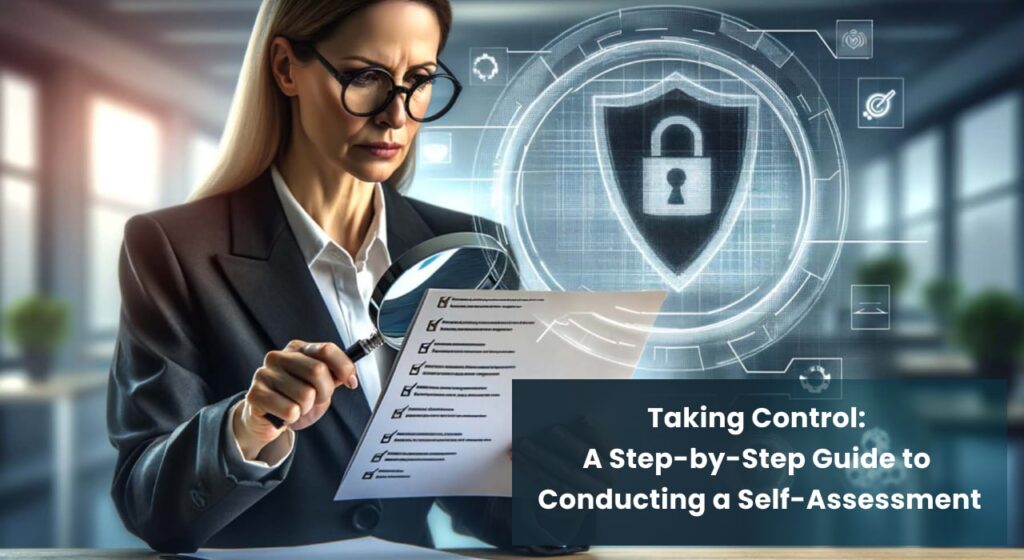
A self-assessment is a powerful tool for small businesses to proactively identify and address cybersecurity vulnerabilities. By following a structured framework, you can gain valuable insights into your overall cybersecurity posture. The National Institute of Standards and Technology (NIST) Cybersecurity Framework is a popular choice for self-assessments due to its clear structure and applicability to businesses of all sizes.
Here’s a step-by-step guide to conducting a self-assessment using the NIST framework:
Step 1: Identify Critical Assets
Your first step is to identify the data, systems and applications that are essential for your business operations. This might include customer databases, financial records, intellectual property, and critical software programs. Ask yourself: If compromised, what data or systems would have the most significant impact on your business? By pinpointing these critical assets, you can prioritize your security efforts and ensure the most robust protection for the information that matters most.
Step 2: Inventory Devices and Systems
Create a comprehensive list of all devices and systems connected to your network. This includes desktops, laptops, servers, mobile devices, and any internet-of-things (IoT) devices used in your operations. Having a complete inventory allows you to assess the security posture of each device and identify potential weaknesses that attackers might exploit.
Step 3: Evaluate Security Controls
Next, evaluate the effectiveness of your existing security controls. Common controls include firewalls, strong password policies, access controls that limit user privileges, and data encryption. For each control, assess its effectiveness in safeguarding your critical assets. Are passwords complex and changed regularly? Is access to sensitive data restricted to authorized personnel only? By critically analyzing your security controls, you can identify areas where improvements are needed.
Step 4: Identify Gaps and Vulnerabilities
By comparing your critical assets with your existing security controls, you can identify potential gaps and vulnerabilities. For example, if you store sensitive customer data on a server, but that server lacks basic security measures like encryption or strong password protection, a vulnerability exists. Documenting these vulnerabilities is crucial for developing a mitigation plan to address them.
Step 5: Prioritize Risks
The severity of risk associated with vulnerabilities can vary considerably. Prioritize identified risks based on the likelihood of them being exploited and the potential impact on your business if a breach occurs. Consider factors like the sensitivity of the data at risk, the potential financial losses and the reputational damage a cyberattack could cause.
Taking Action After Your Assessment
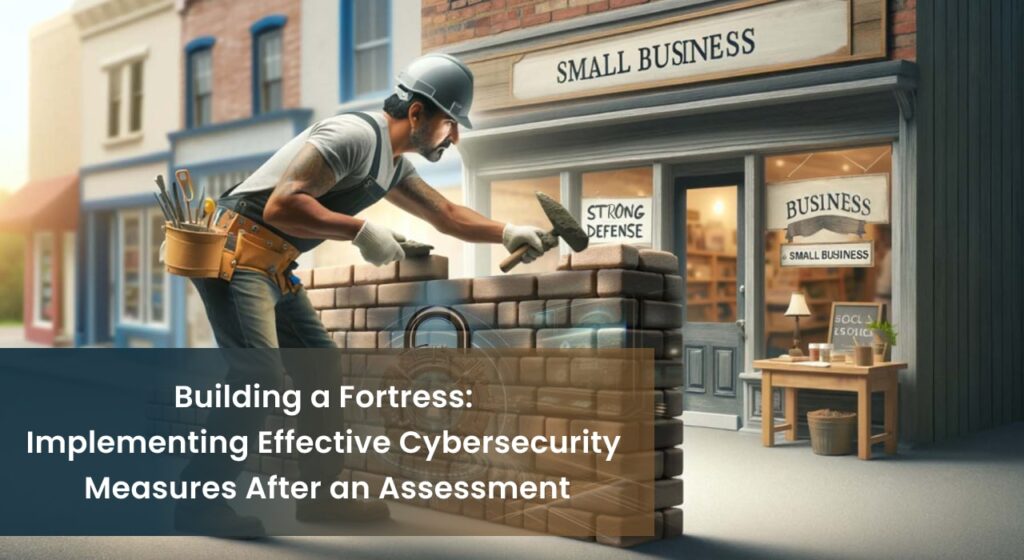
The findings of your cybersecurity assessment are not an endpoint, but rather a roadmap for action. Following a comprehensive assessment, neglecting to address identified vulnerabilities leaves your business exposed to potential cyberattacks.
The specific actions you take will depend on the nature and severity of the risks identified. However, some general mitigation strategies include:
- Implementing New Security Controls: Based on your assessment, prioritize the implementation of new security controls to address critical vulnerabilities. This might involve installing firewalls, strengthening password policies, or implementing data encryption measures.
- Patching Vulnerabilities: Software vendors regularly release security patches to address newly discovered vulnerabilities. Proactively patching your systems with the latest updates is essential to ensure they remain protected against known threats.
- Employee Security Awareness Training: Employees are often the first line of defense against cyberattacks. Investing in employee security awareness training equips your staff with the knowledge and skills to identify and avoid phishing attempts, malware threats, and other social engineering tactics used by cybercriminals.
For complex security solutions or ongoing management of your cybersecurity posture, consider consulting with qualified cybersecurity professionals. These specialists can provide expert guidance on implementing robust security measures, monitoring your systems for threats, and responding to security incidents effectively.
By taking action based on your assessment findings and implementing appropriate mitigation strategies, you can significantly reduce your cybersecurity risks and ensure the continued protection of your valuable business assets.
Resources for Small Businesses
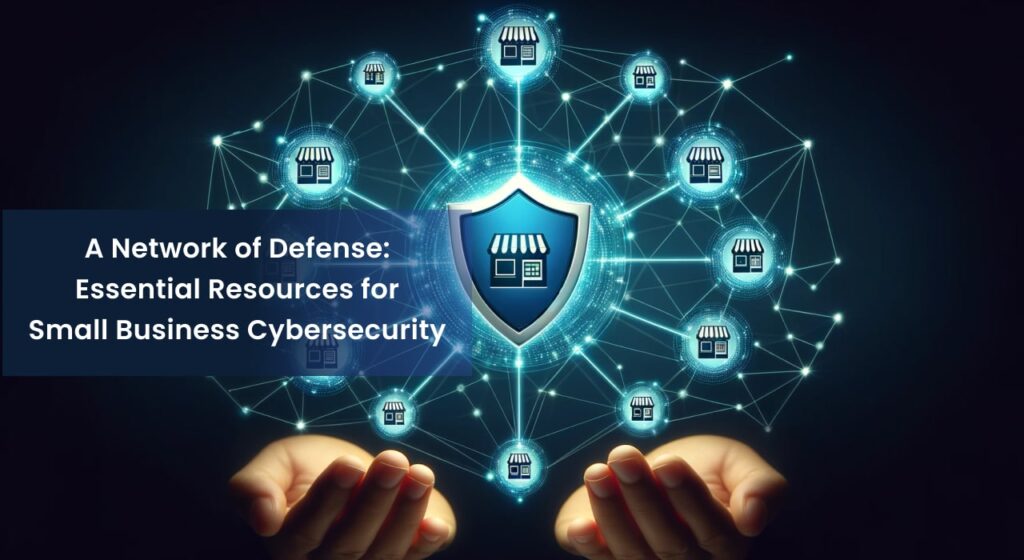
For small businesses, managing the intricate aspects of cybersecurity can be a significant challenge. Fortunately, a wealth of valuable resources is available to equip you with the knowledge and tools necessary to protect your organization.
Government Agencies:
- The National Institute of Standards and Technology (NIST) offers a comprehensive Cybersecurity Framework that provides a structured approach to identifying, protecting, detecting, responding to, and recovering from cyberattacks.
- The Cybersecurity & Infrastructure Security Agency (CISA) is a valuable resource for small businesses seeking guidance on cybersecurity best practices and threat mitigation strategies. Their website includes free publications, checklists, and training materials.
Non-Profit Organizations:
- SCORE is a non-profit organization that provides free mentoring and educational resources to small businesses. They offer guidance on cybersecurity basics and can connect you with cybersecurity mentors who can answer your specific questions.
The National Cyber Security Alliance is a non-profit organization dedicated to raising awareness about cybersecurity. Their website provides free resources on a variety of topics, including cybersecurity tips for small businesses and information on National Cybersecurity Awareness Month (October).
In addition to the resources mentioned above, fostering a culture of security awareness within your organization is equally important. Our companion article, “Building a Culture of Security Awareness: Tips for Encouraging Employee Participation,” provides valuable insights and practical strategies to cultivate a security-conscious workforce.
By leveraging these resources and taking a proactive approach to cybersecurity, small businesses can significantly reduce their risk of cyberattacks and protect their valuable data.
Cybersecurity assessments empower small businesses to take control of their digital security posture. By proactively identifying and addressing vulnerabilities, you can prevent costly cyberattacks and safeguard your critical data. The resources mentioned throughout this guide can equip you with the knowledge and tools necessary to conduct assessments and implement effective security measures. Don’t wait for a cyberattack to become a reality take action today to fortify your defenses and ensure the continued success of your business.
Categorized in:
Comments